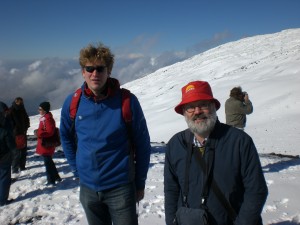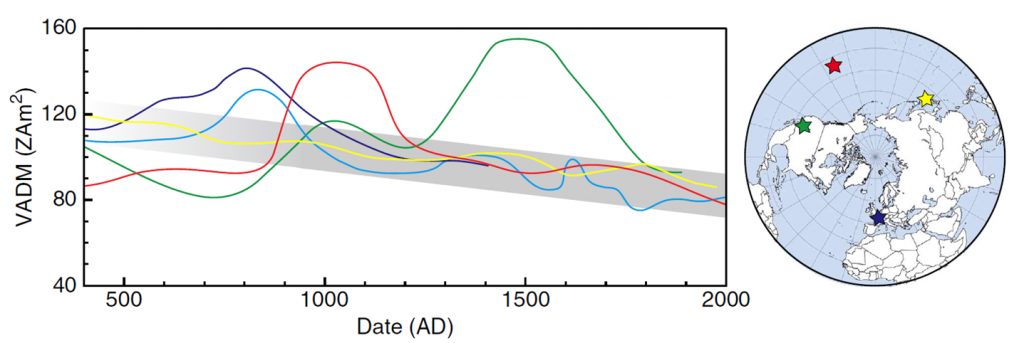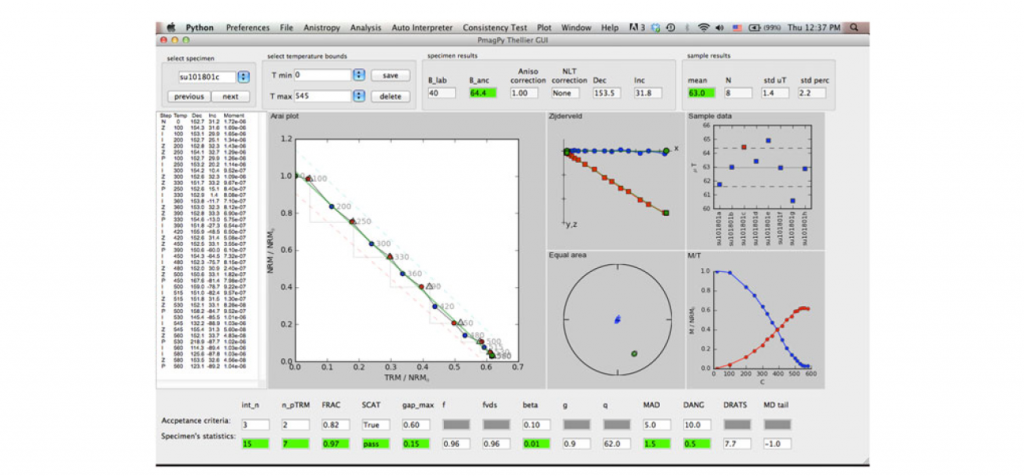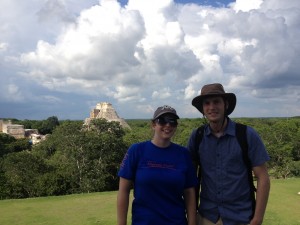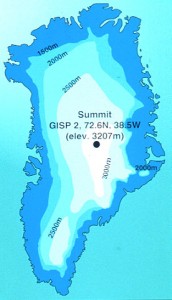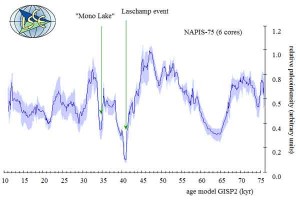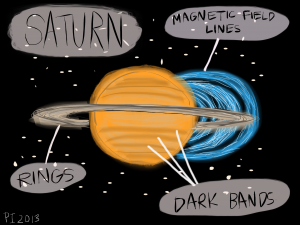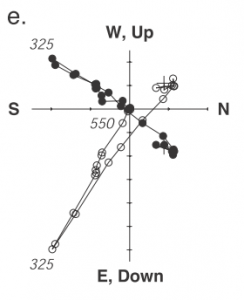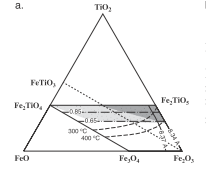Certain mass extinction events, including the largest ever 250 million years ago, have been argued to have been triggered by the eruption of “large igneous provinces” (LIPs) – humongous plateaux comprising stacks of lava flows that erupted in relatively short amounts of time.

But how short a time? This is a crucial question as the atmosphere and oceans are pretty effective at processing the gases associated with volcanic eruptions in the short to medium term. So, unless the eruptions occur very close together (i.e. just years apart), there is not really much scope for them causing the kind of long term climate change that can wipe out large fractions of life.
Here at Liverpool, we just published a paper outlining a new tool for getting a handle on eruption rates based on the similarity of the magnetic field direction recorded in cooled lava flows that are on top of one another. The logic goes:
– the Earth’s magnetic field is changing direction all the time (which is why you have to change the declination on your compass every few years)
– when magma erupts and then cools, the magnetic minerals in the newly formed rock lock in a record of this direction
– if neighbouring lavas erupted within a few years of one another then the magnetic field direction will not have changed very much so the directions recorded in them will be quite similar.
This is not a new idea but the paper presents and tests a new parameter for formally quantifying the degree of this “next neighbour correlation”. The new parameter was shown to be an improvement over existing methods and its application to lavas from the 60 million year old “North Atlantic LIP” gave some quite surprising results. There was already independent evidence showing, that in one section of this large igneous province, there were pauses between eruptions that were, on average, several tens of thousands of years long. Unexpectedly, significant similarity was observed in magnetic directions measured in neighbouring lavas from this section.
Records of palaeomagnetic strength fluctuations over millions of years have already hinted that the magnetic field displays some “correlation” over hundreds of thousands of years (that is, it may be consistently stronger or weaker on average during one period lasting a few hundreds of thousands of years that during another similarly long period). Our new study reports the first evidence that similar “correlation” may be present in the magnetic field direction as well.
Why is this important? Well, in addition to telling us more about the process that generates the Earth’s magnetic field, it also tells us we need to be careful in making the argument that similar palaeomagnetic directions in adjacent lava flows imply very fast eruption rates (as has been done previously). They may not and, with this requirement for rapid lava extrusion reduced, some of the lethality of the “killer LIPs” could be drawn into question too.



